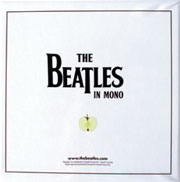09 Apr Music Matters

I recently visited a local supermarket, and as I was walking through the dairy aisle I heard an old familiar tune playing through the store’s background music system. It was Michael Jackson’s Beat It, from the landmark album Thriller. I admit that I couldn’t help but to physically react to the driving beat and blazing guitar riffs with some subtle air guitar and voice harmonizing.
 Thriller was the first music that I purchased on CD; the CD format made its debut in the summer of 1982, and Thriller was released at the end of that year. Almost 30 years later you may wonder how much longer CDs will continue to be available. The good news is that even if you can’t find the CD version of your music, you can purchase a brand new copy on super high-grade vinyl. To the surprise of many consumers, new recordings on vinyl are still alive and well.
Thriller was the first music that I purchased on CD; the CD format made its debut in the summer of 1982, and Thriller was released at the end of that year. Almost 30 years later you may wonder how much longer CDs will continue to be available. The good news is that even if you can’t find the CD version of your music, you can purchase a brand new copy on super high-grade vinyl. To the surprise of many consumers, new recordings on vinyl are still alive and well.
While I appreciate hearing Michael Jackson over the background music system while shopping for groceries, when you consider the components and design of this type of system, expectation for high fidelity is low. This system serves its intended purpose well by providing background music that helps to create a more pleasant mood, however it is not meant to be the main attraction.
THE MAIN ATTRACTION
Once my groceries were unpacked I made a beeline for my music room. I had the intense urge to hear Michael Jackson again, but this time played back on glorious 200-gram virgin vinyl. I gave in to the need for pleasure and gratification that I knew awaited me in the grooves of this musical masterpiece.
The goal of a high quality music system is to allow the listener to invite his or her favorite musicians into the home anytime the mood strikes, and experience the performance with close to lifelike realism. A great music system should not alter the music whatsoever. Don’t expect to hear any specific characteristics such as thumping, overbearing bass, or shrill, over-extended highs.
I carefully cleaned my pristine vinyl copy of Thriller with my trusty record cleaning brush. (I like and recommend carbon fiber brushes). Next the stylus (needle) received a quick brushing to remove any dust or cat hair build up. Now it was time to cue the arm down on the first track, Beat It, and plop myself down in the money seat. (The money seat is the ideal spot to hear the best sonic performance. The left and right speakers placed in the front of the room should form an equilateral triangle with the money seat.)
Quincy Jones brilliantly produced Thriller and his influence is clearly evident. Michael’s voice is firmly anchored dead center, floating between the left and right speakers, with background vocals (including overdubs of Michael’s own voice) spread to the left and right. Percussion and drums are further back, behind Michael’s smooth voice. The sound is multi layered and fills the entire front of my room. Half way through the track, a blazing guitar solo begins and appears solidly placed in the far left, front corner of my room, roughly 4ft. to the left side of the speaker. A truly inspired musical performance by one of the great entertainers of our time.
Clearly both of the renditions of Beat It were enjoyable for me, but I fear that way too many music lovers settle for the supermarket version of Beat It, or consider their iPod and ear buds as the best source for their beloved music.
Planes, trains, and automobiles are among the best places to listen to your trusty iPod and headphones, yet the noise floor that competes with your music is high enough to make serious listening sessions an impossibility. While the iPod is a wonderful product for travel, sports and recreation, the compression and low quality digital to analog conversion severely compromise the sonic performance of the iPod.
BEST OF BOTH WORLDS
My opinion is that vinyl is still the king of sonic quality and that compact disc is also a member of the royal family of music sources. However, even the common, ordinary, iPod can join the royals as a serious music source, thanks to the new generation of products that dock your Ipod and interface it with your serious music system. Several new iPod docks make a pure digital connection to the IPod. This USB based connection bypasses the generic and very basic D to A converter contained within the IPod.
Now a much higher grade D to A converter can be selected and connected. Once the music has been converted to analog it is amplified and sent on to high quality speakers. This concept also applies to all the music on your iTunes play list that is stored on your computer hard drive. With a little bit of care and feeding, your digital music collection can be played and enjoyed on the same high quality sound system that you play your vinyl and compact discs. The results can be quite satisfying.
When is the last time you sat down in the money seat and enjoyed a seriously high quality music system? You owe it to yourself to either rediscover your music collection on vinyl and CD, or to get your digital freak on with the proper interface for your iPod or iTunes on hard drive. You will be glad you did.


